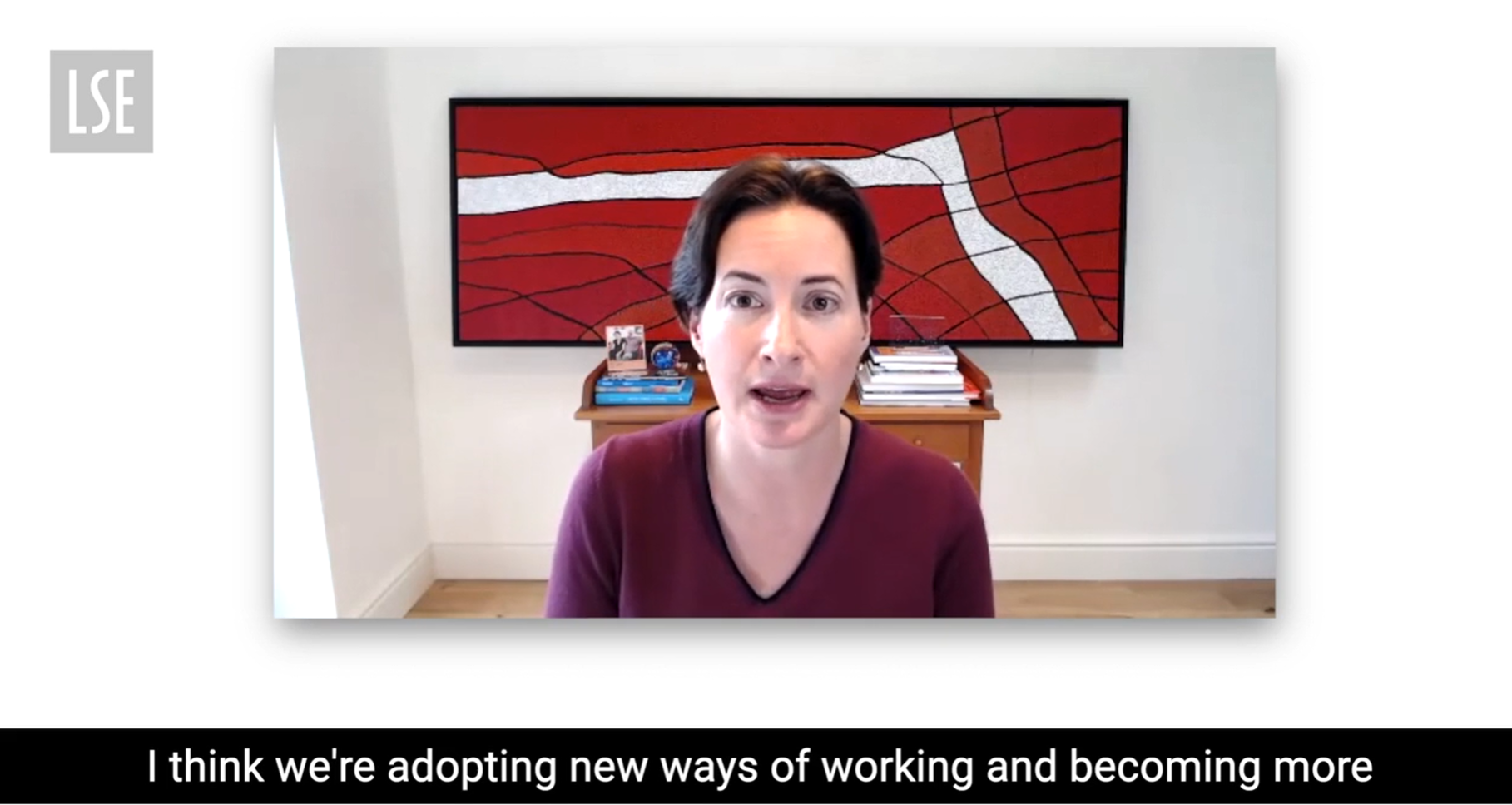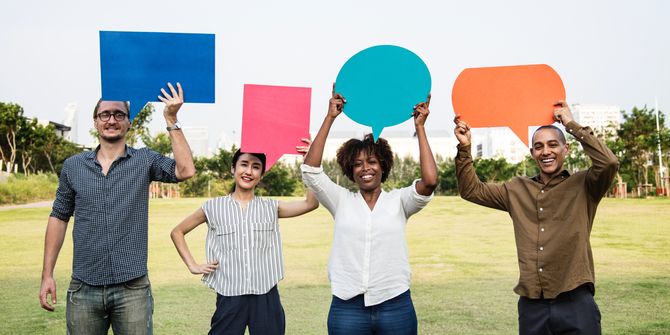As anyone who has tried their hand at measuring impact will know, this is no small feat. And when it comes to charitable giving, how should donors decide where their funding can have the most positive influence?
It is this question, amongst others, that I am excited to be working on as part of my mentorship for a Capstone Project team of current MPA students at LSE as we undertake a sector analysis for a client who would like to develop their funding strategy for the gender quality sector in the UK.
With a view toward understanding how to maximise impact, this team’s work will help build a foundational understanding of the sector, its main actors, the main efforts in the field, and where there are gaps. The project will have a particular focus on the role of existing movements in the sector.
Work on this issue is particularly critical now because very few British people view gender inequality as one of the most serious types of inequality in Great Britain. A 2021 survey found that only 23% of Britons consider inequality between men and women to be one of the most serious types of inequality – considerably less than the on average 33% of Europeans who view it as a serious concern in their country.[1] This is despite Great Britain being ranked only 23rd on the World Economic Forum’s Gender Gap Index.[2]
This is not to say we haven’t made progress. The gender pay gap has decreased, there are more women in higher-paid occupations, and gender inequality in political representation is decreasing.[3] Girls are even outperforming boys at school and women are more likely to enrol in higher education than men.[4]
But while some of the averages on metrics might be improving, progress has been uneven. For some women and girls, particularly those in poorer communities and for women and girls of colour, things have actually become worse. This has been exacerbated by the COVID-19 pandemic, which has led to disproportionate burdens for women.
When people think the job is done and gender equality is a problem for elsewhere, our progress on the issue will stagnate. And the job is far from done:
- Women are less likely to be employed full-time with a rate of 45% compared to 61% of men
- 41% of women provide care for children, grandchildren, older people, or people with a disability compared to 25% of men
- Less than a third of members of parliament are women
- 85% of women cook and/or do housework every day, compared to 49% of men.
- Only 35% of board members for the largest publicly listed companies are women.[5]
- Only 35% of counsellors in England are women. At the current rate, we won’t achieve gender equality in local councils until 2077.[6]
Unsurprisingly, inequalities between genders are even more acute when they intersect with racial inequalities. According to a literature review, The Pay and Progression of Women of Colour, released in September by the Fawcett Society and the Runnymede Trust, in Britain:
- Black girls are twice as likely to be permanently excluded at school compared to white girls.
- Ethnic minority candidates had to send 60% more applications to enter the workforce to receive as many call backs as white people.
- One-third of women of colour say they’ve been unfairly passed over for or denied a promotion at work.
- Women make up only 6% of CEOs of FTSE 100 companies and 35% of civil service permanent secretaries – yet none of these are women of colour.
Achieving gender equality – particularly for those facing intersectional inequalities –isn’t just a question of justice. Increased equality leads to a multitude of positive outcomes for everyone: a stronger economy as women’s participation in work increases and the pay gap decreases, higher levels of peace and stability, better health outcomes given women (particularly women of colour) receive worse medical care than men, more productive and innovative companies, and less poverty. Empowering women also creates a multiplier effect by benefitting multiple generations as women tend to play a greater role in the health and well-being of both children and older generations.
A 2021 survey on what British people think are some of the most serious types of inequality in Great Britain showed that the highest shares of respondents selected income and wealth inequality (56%) and inequality between more and less deprived areas (51%). These forms of inequality are all interconnected: improving gender equality would also help improve wealth and spatial inequalities, the latter of which compound gender inequality.
Among the many culprits for why we haven’t yet achieved gender equality in the UK are social norms, bias, and stereotyping. Survey research has shown that boys and girls as young as the ages of 7-11 have already established gendered career aspirations; for example, boys are 20 times more likely to want to be an engineer or architect.[7] Women and girls – particularly if they are ethnic minorities – also face higher rates of harassment and violence, particularly in workplace or educational settings.
What would it take to change the harmful stereotypes in Britain that help keep inequalities entrenched? To begin to answer this question, the MPA Capstone group will explore the role of movements in achieving progress on gender equality.
We know that social movements have played a key role toward shifting behaviour, attitudes, and policy on many social issues. For example, women in Britain won equal voting rights in 1928 thanks to its famous suffragette movement led by Emmeline Pankhurst. Research has shown that movements have been associated with successful policy outcomes: data from 1975-2005 from studies on 70 countries has shown that there have been more comprehensive government responses to violence against women in countries with stronger women’s movements on the issue.[8]
Movements have the potential to build popular support, to apply political pressure on governments, but also to reframe an issue, including reframing whose issue it is. Widely supported movements can demonstrate that an issue isn’t just a concern of the few, it’s a concern of the many.
But movements are only one of many possible ways of effecting change; what works best differs based on the context. The MPA students will use their research to try to evaluate the impact of different approaches in the sector with a particular focus on determining the extent to which social movements can be a critical lever for change for progressing gender equality in the UK.
I look forward to working with these students to help their client develop a funding strategy that maximises impact on progress toward gender equality. Given what’s at stake and the benefits progress on gender equality would bring, I hope everyone can see why we should all be concerned.
[1] Duffy, B., Murkin, G., Hewlett, K., Benson, R., & Hesketh, R. (2021). Inequalities around the globe: what the world sees as most serious. https://kclpure.kcl.ac.uk/portal/files/149731100/inequalities_around_the_globe_final.pdf
[2] Cowper-Coles, M., Glennie, M., Mendes Borges, A., & Schmid, C. (Oct. 2021). Bridging the gap? An analysis of gender pay gap reporting in six countries.” https://www.kcl.ac.uk/giwl/assets/bridging-the-gap-full-report.pdf
[3] Equality and Human Rights Commission (2019). Is Britain Fairer? The state of equality and human rights in 2018. https://www.equalityhumanrights.com/sites/default/files/is-britain-fairer-accessible.pdf
[4] Cowper-Coles, M., Glennie, M., Mendes Borges, A., & Schmid, C. (Oct. 2021). Bridging the gap? An analysis of gender pay gap reporting in six countries.” https://www.kcl.ac.uk/giwl/assets/bridging-the-gap-full-report.pdf
[5] European Institute for Gender Equality (EIGE). 28 October 2020. Gender Equality Index 2020. https://eige.europa.eu/publications/gender-equality-index-2020-united-kingdom
[6] Fawcett Society. 2021. We won’t see gender equality in local councils until 2077 – new data shows. https://www.fawcettsociety.org.uk/News/local-council-data-2021
[7] Equality and Human Rights Commission (2019). Is Britain Fairer? The state of equality and human rights in 2018. https://www.equalityhumanrights.com/sites/default/files/is-britain-fairer-accessible.pdf
[8] Horn, Jessica. 2013. Gender and social movements: overview report. BRIDGE. https://www.ludenet.org/projects-files/6/resources/gender-and-social-movements-overview-report-2013-206.pdf





You have used the word ‘counsellor’ when you mean ‘councillor’.